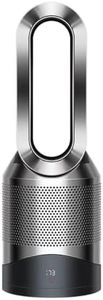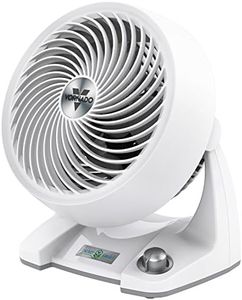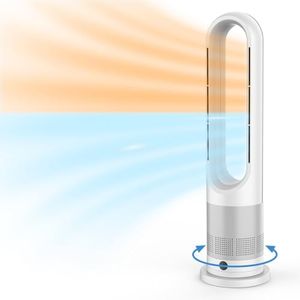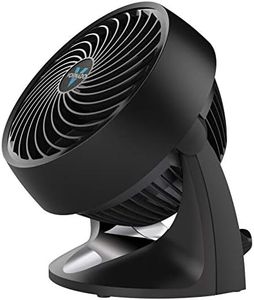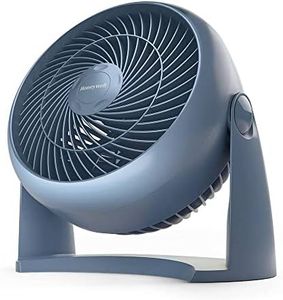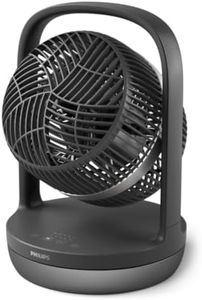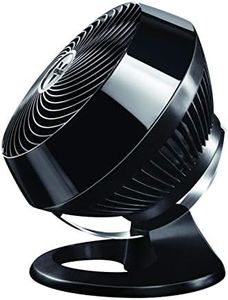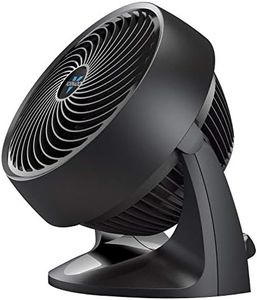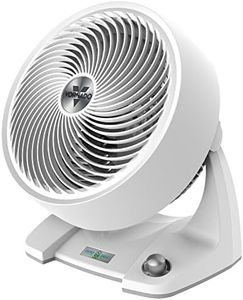We Use CookiesWe use cookies to enhance the security, performance,
functionality and for analytical and promotional activities. By continuing to browse this site you
are agreeing to our privacy policy
10 Best Silent Fans
From leading brands and best sellers available on the web.Buying Guide for the Best Silent Fans
When looking for silent fans, whether they're for your computer, living space, or other electronic devices, your main goal is to balance quiet operation with effective airflow and long-lasting performance. Silent fans are ideal if you value a peaceful environment, especially in bedrooms, offices, or media rooms. To choose the best fit for your needs, it's essential to understand what makes a fan both quiet and efficient. Comparing key specifications will help you find the fan that best suits your cooling requirements while maintaining a low noise profile.Noise Level (dBA)Noise level is measured in decibels (dBA) and indicates how loud the fan will be during operation. The lower the dBA rating, the quieter the fan is. Fans usually range from around 15 dBA (very quiet) to over 30 dBA (noticeably audible). For silent fans, a noise level below 25 dBA is considered excellent. If you need near-silence for sleep or recording, aim for the lowest possible number. If a little background hum doesn't bother you and you need more airflow, a mid-range value might be acceptable.
Fan Size (mm/inches)Fan size refers to the diameter of the fan, commonly measured in millimeters (mm) or inches. Typical sizes for computers include 80mm, 120mm, and 140mm, while home fans can be much larger. Larger fans can move more air at lower speeds, making them quieter for the same airflow. If your space allows, choose the largest fan that will fit, as it can often run slower and quieter while still providing good cooling.
Airflow (CFM)Airflow is measured in cubic feet per minute (CFM) and tells you how much air the fan can move. Higher CFM means more strong cooling, but often with more noise. For silent operation, look for a balance: moderate CFM for basic needs or high CFM if you require more intense cooling, but remember higher values can sometimes lead to more noise. Consider the needs of your space or device; small rooms or lightly loaded computers need less airflow than hot, busy ones.
Fan Speed (RPM)Fan speed, measured in revolutions per minute (RPM), tells you how fast the fan blades spin. Lower RPM generally means quieter operation but can reduce airflow. Silent fans often operate at 1000 RPM or lower, while high-performance fans may reach 2000 RPM or more. For quiet environments, select a fan with lower RPM or one with an adjustable (variable) speed so you can tune it for silence when needed.
Bearing TypeThe bearing type determines how smoothly and quietly the fan runs and its lifespan. Common types include sleeve, ball, and fluid dynamic bearings. Fluid dynamic and magnetic levitation bearings tend to be the quietest and most durable, making them ideal for silent fans. If noise reduction and longevity matter most, prioritize fans with these premium bearing types.
Vibration Dampening FeaturesSome fans come with rubber pads or mounts to absorb vibrations between the fan and its mounting surface. This reduces noise caused by vibration, which can be especially important in computer cases or when mounting on thin panels. If you're sensitive to low-frequency hums or want the quietest setup possible, look for fans that specifically mention vibration dampening features.
Control Options (PWM or Voltage Control)Fans can sometimes be controlled automatically or manually to adjust their speed and noise output. PWM (pulse-width modulation) or voltage control allow fans to run more slowly and quietly when not much cooling is needed. If you want your fan to always be as quiet as possible, look for models that offer these control options, especially if connecting the fan to a computer or smart control system.




